How To Heal Cavities Naturally
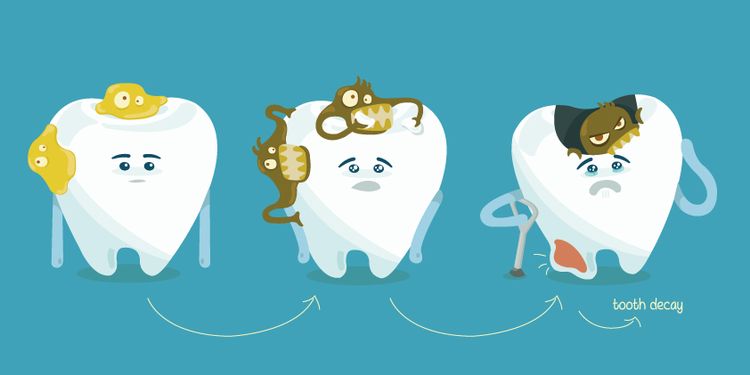
It’s a conventionally held belief that cavities result from the acidic waste products of the microorganisms in your mouth. This theory is supplemented by the idea that when you feed these bugs refined sugar, their preferred fuel source, the bugs go crazy and release acidic byproducts. It’s believed that these byproducts erode the teeth, resulting in cavities.
Research does show that increased sugar intake results in a higher likelihood of developing cavities. But is it truly accelerated by the simplistic mechanism described above?
By taking a closer look at tooth physiology, it’s clear that our teeth aren’t defenseless victims to microorganisms’ attack. Teeth, much like bone, are dynamic tissues that have complex systems in place to maintain healthy function. Not surprisingly, healthy teeth are intimately related to your overall health.
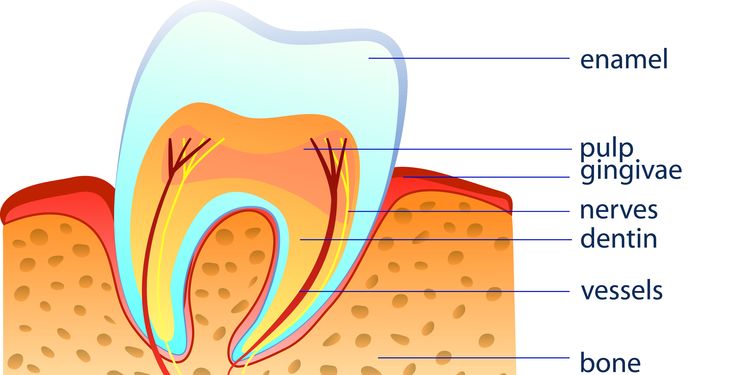
Teeth are Well-Equipped for Their Own Protection
Teeth are composed of a hard, bone-like matrix called dentin covered by an outer layer of even harder enamel. Underneath the dentin, you’ll find the tooth pulp, commonly referred to as the root. The pulp contains the nerves, lymph, and blood vessels that are necessary for the transport of nutrients to the tooth cells known as odontoblasts.
Not only do odontoblasts facilitate nutrient delivery to your dentin and enamel, but they also act as miniature pumps to flush the tooth of unwanted debris. This process is known as the dentinal fluid transport system, and it’s important for maintaining the integrity of your teeth by excreting damaging materials and distributing nutrients to the dentin and enamel.1
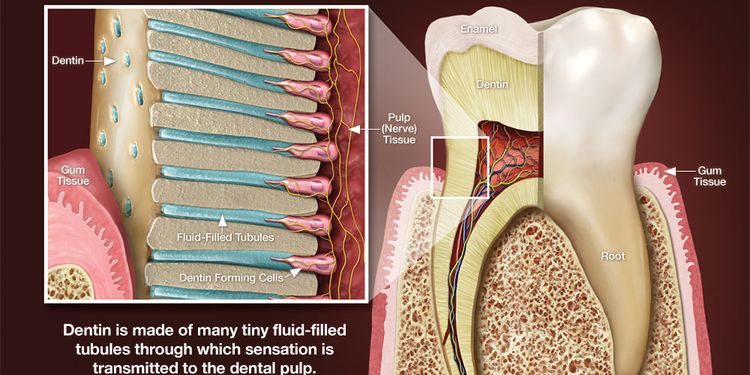
How Disturbed Dentinal Fluid Flow Can Cause Cavities
The American Dental Association isn’t entirely wrong when they say that sugar contributes to cavities.2 Although sugar may feed bad bacteria in the mouth, healthy teeth should be able to maintain their structural integrity despite the acidic byproducts from these bacteria.
Dr. Ralph Steinmen DDS, MS and Dr. John Lenora are two professors who have been researching a different explanation for the damaging effects of sugar on dental health for over 30 years.
Their research suggests that sugar intake has a detrimental effect on the complex dentinal fluid transport that was mentioned earlier in the article. Steinman and Lenora conducted experiments with rats showing that sugar can reverse the flow of dentinal fluid, leading to an accumulation of debris in the tooth and nutrient deprivation in the dentin and enamel.3

How Your Brain Helps Protect Your Teeth
Endocrine function may also have an effect on the dentinal fluid transport system and on the ability of odontoblasts to remineralize the teeth. Steinman and Lenora conducted research that proposes that the hypothalamus and the parotid glands communicate to regulate a healthy dentinal fluid flow.4
The hypothalamus is a structure in your brain responsible for all of your body’s “rest and digest” actions. This includes signaling the parotid glands to release saliva and parotid hormones into the mouth when you eat. It seems that both products are important for maintaining optimal conditions for your teeth.
As Steinman’s research suggests, parotid hormones play an active role in regulating dentinal fluid flow.4
According to the Wellness Mama, saliva is important because it contains the minerals used to mineralize teeth, and it keeps the mouth at a healthy pH to do so.5 Saliva is the watery secretion from your parotid gland and other salivary glands that’s released by the action of chewing.

Cavities are a Sign of Nutrient Deficiency
The second piece of the puzzle to proper remineralization is the availability of vitamins and minerals necessary to build dentin and enamel. Even with a well-oiled dentinal fluid transport system, you still need the raw materials for remineralization.
Weston A. Price was a dentist and pioneer in researching the connection between poor diet and cavity-filled mouths. In the mid-1900s, Price studied 14 different indigenous tribes of people and compared them to their modernized counterparts and noticed that the indigenous groups weren’t plagued by cavities or other dental health issues such as narrowed dental arches and severely crowded teeth.
Price summarizes his research in his book Nutrition and Physical Degeneration and cites some striking statistics for the occurrence of cavities. For example, 70% of the modernized Australian Aboriginal people that he studied had cavities, while the isolated aboriginal counterparts had zero percent.
Price attributed this difference to the lack of processed and refined foods such as sugar and flour and the inclusion of a highly nutrient-dense diet that provided all of the essential minerals and vitamins needed for building strong, healthy teeth.6
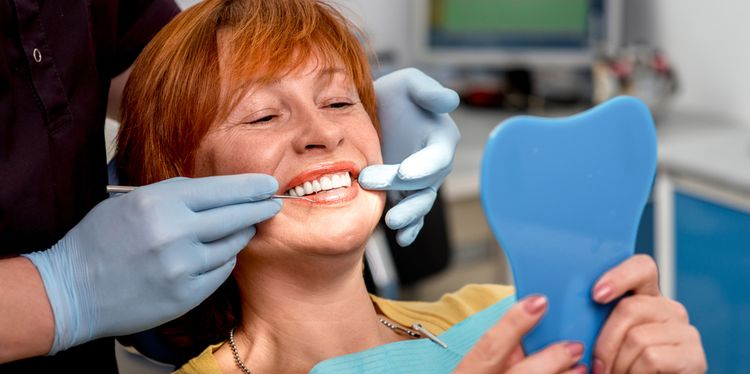
What Can You Do to Prevent and Reverse Cavities Naturally?
As you might have guessed, maintaining your teeth isn’t as simple as killing all of the bacteria that naturally inhabit your mouth. Obviously tooth brushes, fluoride-filled toothpastes, and antibacterial mouthwashes are a modern invention that indigenous groups of people didn’t need to maintain healthy teeth.
So what’s the missing link in today’s modern world?
Cavities most likely result from disrupted tooth physiology and poor overall health, making the tooth more susceptible to erosion by pathogenic bacteria. The main insult comes from our modern, nutrient-devoid diet that can interfere with dentinal flow and deprive our teeth of their natural building blocks.2
If tooth decay results from broken physiology and nutrient deficiency, the natural treatment aims to correct this physiology and restore key nutrients. Below is a list of things you must try to begin to reverse your existing cavities and prevent new ones from forming.
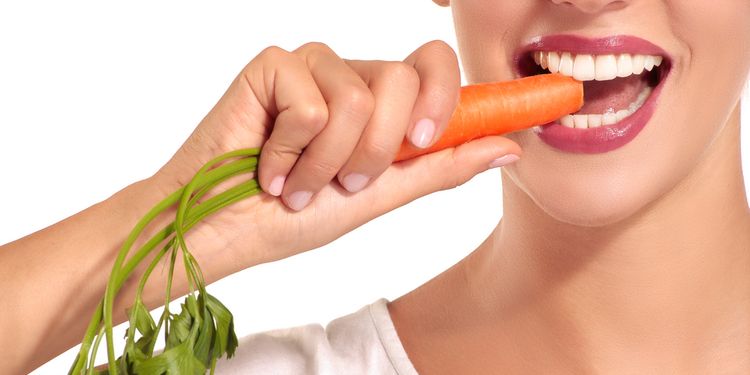
Eat More (Healthy) Fat
Price emphasized in his book that one of the major differences between the indigenous and modernized diets was the fat content (and consequently, the fat-soluble vitamin content of the diet). Vitamins A, D, and K2 are all fat-soluble vitamins that work together to increase absorption of calcium as well as other minerals and direct it into the bones and away from the soft tissues of the body, like your artery walls.
Kate Rhéaume-Bleue, ND, discusses the balancing act of these three vitamins in her book, Vitamin K2 and the Calcium Paradox. She explains that vitamins A and D work together to activate the production of osteocalcin, an important protein for binding minerals in bone and tooth mineralization.
Additionally, vitamin D activates bone-building cells and the production of another important protein, Matrix GLA protein (MGP), which escorts calcium from the blood and tissues into the bones and teeth. Vitamin D can also be activated to promote the absorption of calcium and phosphorus in the small intestine.7
Once vitamin A and D increase production of osteocalcin and MGP, K2 assists the conversion of these proteins into their active forms, making the proteins better at binding calcium in the process of mineralization.7
So where do you find these important fat-soluble activators? It’s no coincidence that they are found in foods containing fat. Fat-soluble vitamins need fat and bile to be absorbed through the small intestine. The best sources of fat and fat-soluble vitamins come from grass-fed animals.

The bright yellow butter from grass-fed cows is a reflection of the much higher amounts of vitamin A compared to conventionally produced butter. It turns out that large herbivorous animals like cows are much more efficient at converting beta carotene, a vitamin A precursor from plants, into active vitamin A.7 Active vitamin A can be found in high amounts in animal liver, which happens to be a rich source of many other vitamins and minerals.
We can also take advantage of the herbivore’s ability to convert vitamin K1 to the fat-soluble K2. It’s likely that a bright yellow grass-fed butter will also contain high amounts of K2. Because it’s the bacteria in the cow’s stomach that converts K1 to K2, K2 can also be found in high amounts in bacterially fermented dairy (like aged cheese) and is highest in a fermented soy bean dish called natto.7
Vitamin D can easily be obtained from sun exposure in the summer months. In the absence of sunshine, a good source of vitamin D is fermented cod liver oil, which also contains vitamin A. Dr. Price took fermented cod liver oil a step further by adding high vitamin butter oil as a source of K2. All of Dr. Price’s patients were required to consume this mixture daily to provide the synergistic benefits of all three of these crucial nutrients.6

Get More Minerals
Once you up your fat-soluble vitamins, you also have to increase your mineral intake and absorption. While it’s common knowledge that we need calcium to maintain strong bones, calcium needs phosphorous in order to crystalize. Dr. Price found that the diets of the indigenous groups he studied contained much higher amounts of calcium and phosphorus.
In his book Cure Tooth Decay, Rameal Nagel expands on the work of Weston A. Price and the idea that tooth decay can be viewed as systemic malnutrition. Nagel encourages raw full-fat milk consumption for optimizing calcium and phosphorus levels as well as cooked vegetables grown in mineral-rich soil to increase the bioavailability of calcium, phosphorus, and other minerals.2
Both Price and Nagel require that bone broth be consumed as an ideal food for healing cavities. Bone broth is high in trace minerals, healthy fat, and gut-healing gelatin that will help increase mineral absorption.
While Price focused mostly on calcium and phosphorus content, Nagel advocates for increasing minerals that promote energy production like copper, iron, manganese, magnesium, and likely many other minerals that are required for a healthy dentinal fluid flow and consequently fewer cavities.2
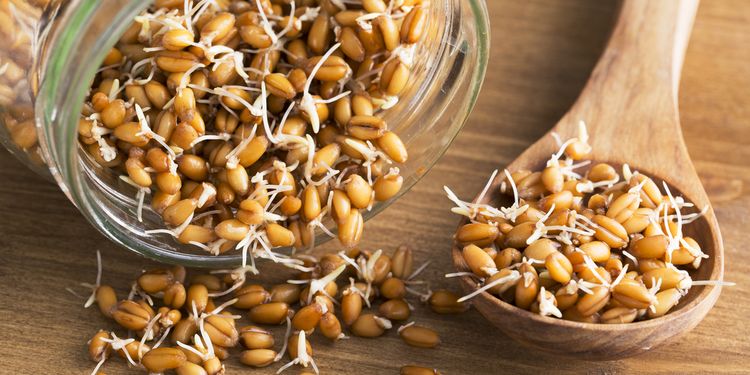
Get Rid of the Grains
Although Price recommended freshly ground grain products for their fat-soluble vitamin E, Nagel advises that grains be eliminated to heal cavities.
As most Paleo enthusiasts will be quick to point out, grains are a very recent addition to the human diet and probably not the best in terms of maintaining the integrity of our teeth. According to Mark Sisson, researchers use the appearance of cavities in ancient populations to determine if and when they began to farm grains.8
According to Nagel, this correlation is substantiated by the fact that grains are extremely high in phytic acid, a storage form of phosphorous in plants. Unfortunately, this type of phosphorus can’t be absorbed and interferes with normal mineral absorption and metabolism in humans, contributing to mineral deficiency and cavities.2
The Wellness Mama explains that phytic acid needs to bind to calcium in order to be excreted, resulting in a loss of calcium. The same article shows that phytic acid also blocks zinc and iron absorption and vitamin D activity.9
It’s important to consider that even with a diet rich in fat-soluble vitamins and essential minerals, if phytic acid isn’t reduced, cavities may still be able to progress. The Wellness Mama cites research by Dr. Edward Mellanby and Dr. May Mellanby that showed that vitamin D supplementation was only helpful in healing cavities when participants were also on a low phytate diet.9
Unfortunately, grains aren’t the only foods high in phytic acid. The Weston A. Price foundation provides a list of foods high in phytic acid, including most grains, legumes, nuts, and seeds. Fortunately, this list is supplemented with ways of reducing phytic acid content of foods, such as sprouting, fermenting, and soaking.10

Ditch the Sugar (and Other Refined White Powders)
This is probably the most important step you can take to save your teeth. There are multiple mechanisms that explain the detrimental effects of sugar on your body chemistry (and, consequently, the health of your teeth).
Nagel references the work of another forward-thinking dentist named Dr. Melvin Page. Page studied the ideal ratio of calcium to phosphorus in the blood that was conducive to bone remodeling. He found the ideal ratio to be about two and a half parts calcium to one part phosphorus; a disturbed ratio caused tooth decay and gum disease.2
Interestingly, chronic and repetitive spikes in blood sugar interfere with this important calcium-phosphorous balance. When this balance is off, your body compensates by pulling calcium, phosphorus, or both from the bones and teeth in an attempt to rebalance the minerals in the blood.2 This begins to explain an alternative sugar-cavity connection.
As mentioned earlier, Steinman has also shown that sugar impairs the flow of dentinal fluid in his experiments with rats. This may be explained by the fact that the hypothalamus plays a role in both sugar metabolism and dentinal fluid flow regulation.
As Nagel explains in his book, if the hypothalamus is busy telling the pancreas to secrete insulin, the parotid gland is likely not getting the message to secrete parotid hormone to conduct dentinal fluid flow.2
Other factors inhibiting your hypothalamus and your “rest and digest” mode, like chronic stress and lack of exercise, will probably negatively impact your dentinal fluid flow as well.2
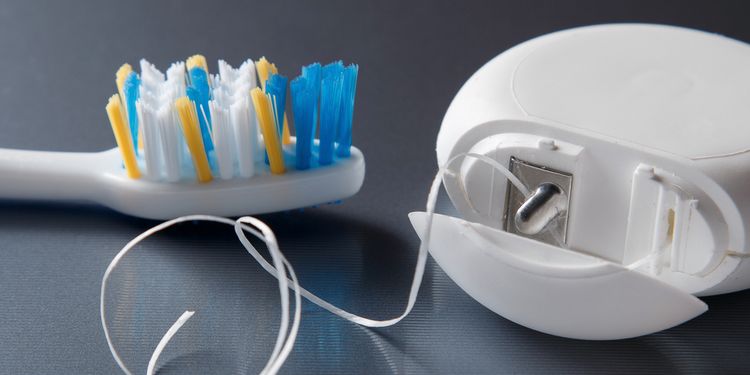
Now You Know, It’s What’s on the Inside That Counts
Teeth can be amazingly resilient under the proper circumstances. With a diet abundant in fat-soluble vitamins and bone-building minerals (and lacking in anti-nutrients like phytic acid and sugar), teeth should be able to withstand the insults of your oral microflora (even the bad bugs). After all, we’ve evolved with bacteria and their byproducts.
This doesn’t discredit the importance of maintaining a healthy external environment with regular brushing or other dental hygiene rituals. In fact, Mark Sisson reminds us that most traditional cultures do have dental hygiene rituals in one form or another. Sisson references the use of chew sticks from medicinal trees in traditional cultures of India and Africa.8
Although bacteria may not directly weaken your teeth, they may definitely take advantage of the unchartered terrain inside a susceptible tooth.
Dave Asprey recommends oil pulling, an Ayurvedic tradition for maintaining a healthy mouth. Asprey touches on some of the existing research on oil pulling and recommends using coconut oil and some oregano essential oil for added antimicrobial benefits.11 Chris Kresser recommends an oral probiotic rinse with strains of Streptococcus salivarius that may help break up the plaque formation on your teeth.12
You might want to consider adding one or more of these alternative practices to supplement your brushing and flossing. At the very least, try to go for a toothpaste that’s fluoride- and chemical-free.
The Wellness Mama has an easy homemade mineralizing toothpaste that can be found on her website and is reproduced below. But remember, none of these practices can replace a highly nutrient-dense diet in the maintenance of healthy, cavity-free teeth.
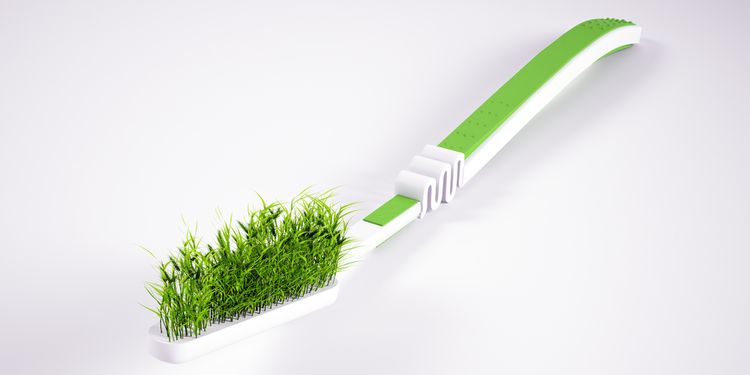
Remineralizing Toothpaste Ingredients:
- 5 parts calcium powder
- 1 part diatomaceous earth (optional; contains trace minerals and silica. UPDATE: A reader noted that DE can be abrasive and isn’t needed with the baking soda, so if you don’t have DE, no worries!)
- 2 parts baking soda
- 3 parts xylitol powder (this ingredient isn’t completely necessary but just keeps it from tasting bitter)
- 3-5 parts coconut oil to get desired texture
- Optional ingredients: essential oils for flavor (mint, cinnamon, and orange are all good), myrrh, and trace minerals
Remineralizing Toothpaste Instructions:
- Mix all powdered ingredients (calcium, baking soda, xylitol) well in a bowl.
- Add coconut oil one part at a time until you get desired consistency.
- Add any optional ingredients, including essential oils for flavor (my favorite is peppermint orange).
- Store in small container like 1/2 pint glass jar. To use, either dip clean toothbrush into it, or use a popsicle stick or spoon to put on toothbrush. I’ve also thought of storing in a plastic bag with a corner cut off to be able to squeeze it like toothpaste, but I haven’t tried it yet.
